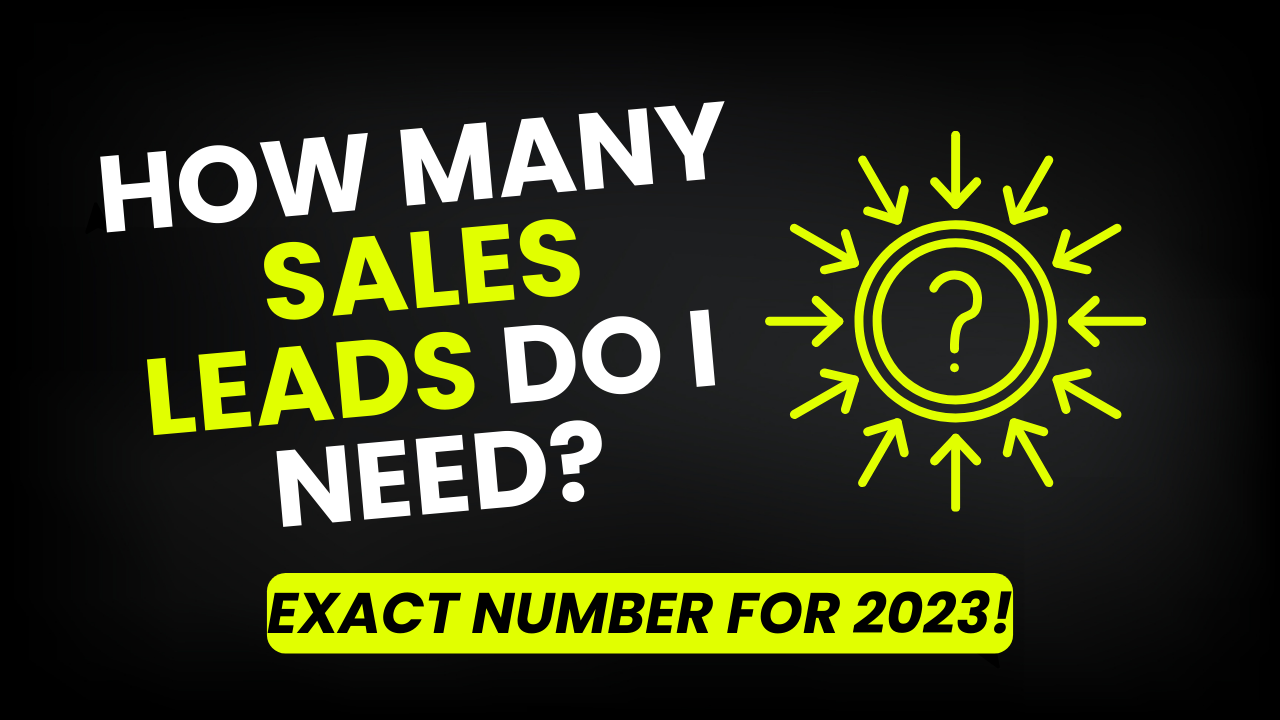Every business owner, whether they’ve been at it for years or just opened their doors, dreams of growth.
It’s what gets us up in the morning and keeps us working late.
As 2023 is coming to an end, there’s this nagging question that won’t let go: “How many sales leads do I actually need?”
It’s more than just a random thought, it’s the heartbeat of our ambitions.
If you’ve been wrestling with this question, staring at your notes and wondering if you’re on the right track, I’ve got some good news.
You’re about to get answers.
In this blog guide, we’ll tackle that big question and give you a clear picture of what sales leads really mean today.
Get ready to dive deep into the world of leads and come out with a plan that might just change everything for you.
Summary
This blog is like a roadmap to understanding sales leads in 2023.
We’re cutting through the noise and getting straight to the point: how many leads do you really need?
No fluff, no jargon, just clear answers.
We’ll cover what a qualified lead looks like, how to figure out what each lead costs you, and the number of leads you need to hit your growth targets.
We’ll also dive into key conversion metrics, sales closing rates, and break down the differences between MQLs, SQLs, and PQLs. Plus, we’ll explore how many times you should be reaching out to your leads to really make an impact.
By the end of this, you’ll not only have a number in mind but a stronger grip on your entire sales strategy.
Let’s get started.
What is considered a Qualified Lead?
When we talk about leads in the business world, there’s a lot of lingo flying around. But one term that really stands out is the “qualified lead.”
So, what’s it all about?
Simply put, a qualified lead is someone who fits the mold of your perfect customer.
They’re not just any random person who stumbled upon your website or business.
Instead, they’ve caught the eye of your marketing team, been given the nod of approval by your sales crew, and most importantly, they’ve shown clear intention to buy what you’re selling.
Now, you might hear terms like MQLs, SQLs and PQLs being thrown into the mix.
Before we move on, let’s clear the air.
What are the differences between MQL, SQL and PQL?
The world of sales and marketing often feels like a maze of acronyms. MQL, SQL, PQL – it might seem like someone took the alphabet and just shook it up!
But in the intricate dance of B2B lead generation, these terms play vital roles.
Let’s break them down:
MQL (Marketing Qualified Lead)
This is your initial contact.
Think of MQLs as those who’ve shown a spark of interest.
Maybe they’ve subscribed to your newsletter, downloaded an eBook, or attended a webinar.
They’ve done something to indicate they’re at least slightly interested in what you have to offer.
However, they haven’t yet reached that pivotal point where they’re ready to buy.
SQL (Sales Qualified Lead)
If MQLs are the ones window-shopping, SQLs are inside the store, trying things on.
They’ve moved beyond just casual interest.
They’ve engaged in a deeper way, perhaps by asking specific questions about your products or services, or even discussing pricing.
They are in a position where they are seriously considering a purchase, making them ripe for your sales team to engage.
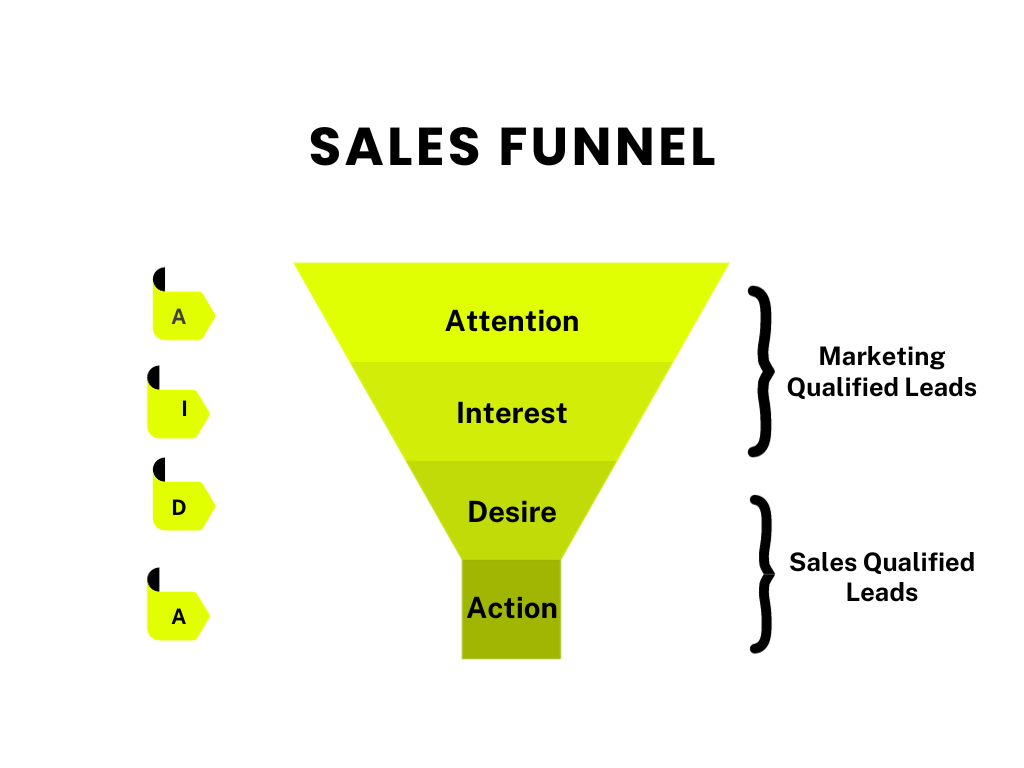
PQL (Product Qualified Lead)
PQL is a relatively newer term in the mix, and it’s a bit different from the other two.
PQLs are people who’ve used a product, typically in a freemium model or a trial period, and have exhibited behaviors that indicate they see value in becoming a paying customer.
They’ve tried, they’ve tested, and now, they’re considering full commitment.
In a nutshell, while all these leads have shown some level of interest, they are at different stages in the buying journey.
MQLs are just flirting with the idea, SQLs are considering a commitment, and PQLs have experienced what you offer and are pondering going all in.
Knowing the distinction helps in tailoring your approach, ensuring you’re neither too pushy with an MQL nor too laid-back with a PQL.
So, why does this distinction matter for our discussion today?
Simply put, understanding the differences between MQLs, SQLs, and PQLs is paramount to figuring out the exact number of leads you need.
Each type of lead has its own conversion rate, nurturing process, and value to your business.
By getting a grip on where each lead stands in the buying journey, you can more accurately predict how many of each type you’ll need to generate to hit your sales targets.
This knowledge sets the foundation for the rest of our deep dive into sales leads for 2023.
How to Calculate Properly Cost per Lead (CPL)?
The importance of calculating Cost Per Lead (CPL) can’t be overstated, especially in our quest to figure out the number of leads we need.
CPL is like a health check for your marketing efforts.
By knowing how much each lead costs you, you can assess if you’re investing wisely or burning through cash with little to show for it.
It’s a critical metric that can influence your budget allocation, determine the profitability of campaigns, and ultimately drive the strategies you adopt.
For our discussion, understanding CPL will give us context when we later explore how many leads your business should aim for, and how much you should ideally spend to acquire them.
Now, let’s dive into how to calculate it.
Calculating Cost per Lead (CPL):
CPL is a straightforward metric, but its simplicity is what makes it so powerful.
To calculate your CPL, you simply divide the total cost of your marketing campaign by the number of leads generated from that campaign.
CPL = Total Campaign Cost ÷ Number of Leads Generated
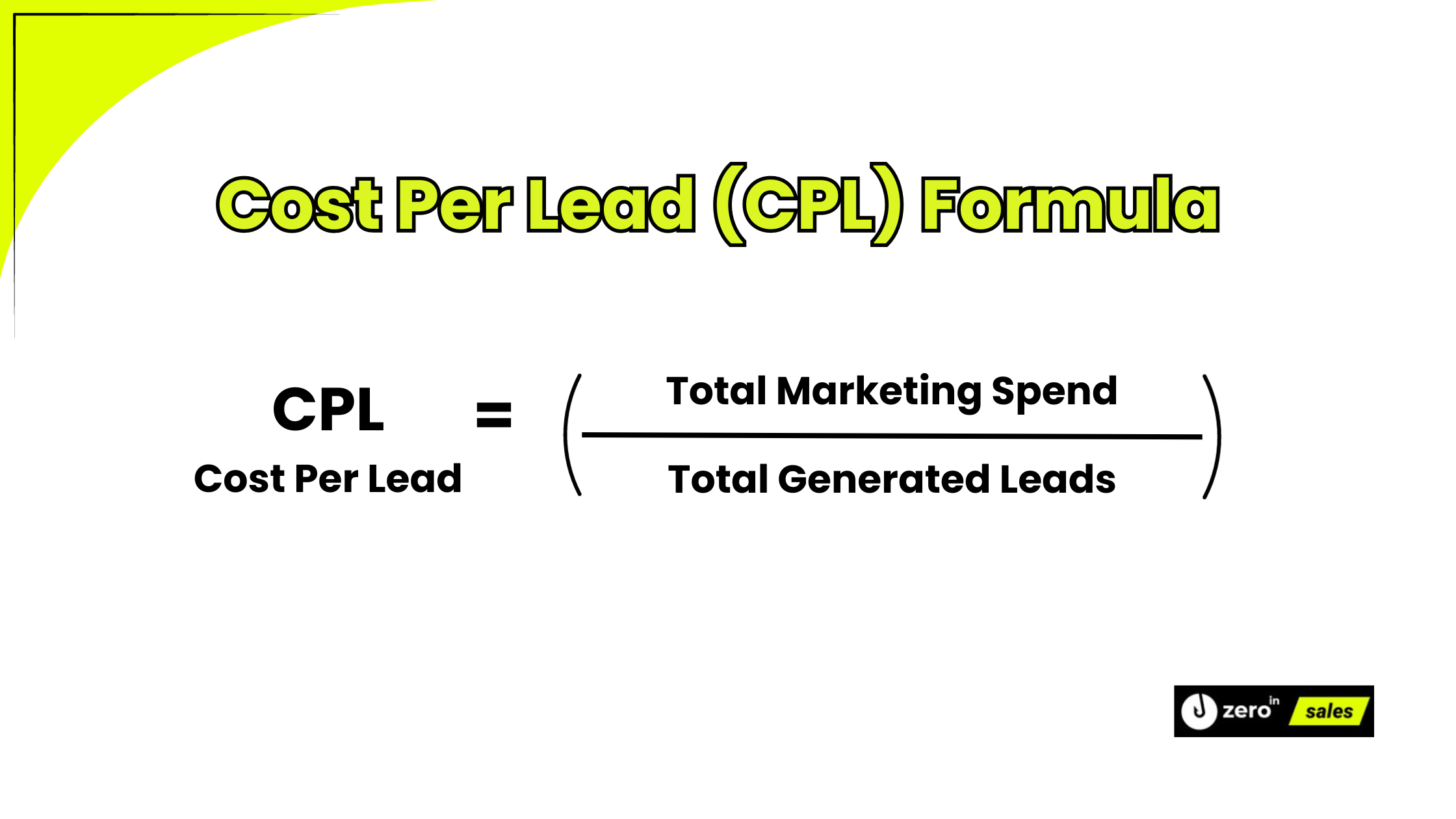
For instance, let’s say you take and spend $5,000 on a lead generation campaign and it generates 250 leads, your CPL would be:
CPL = $5,000 ÷ 250 = $20 per lead
Armed with this number, you can benchmark your campaigns against industry standards, compare the effectiveness of different marketing strategies, and ensure you’re getting a solid return on investment.
Remember, while a lower CPL is generally desirable, it’s equally important to consider the quality of the leads you’re acquiring.
After all, attracting a ton of low-quality leads at a cheap rate might not be as valuable as securing fewer, but more qualified leads, even if they come at a higher cost.
Balance is the key.
How Many Leads Do You Need To Grow Your Business?
This is the meaty question, the heart of our topic, and arguably the conundrum every business owner grapples with: “How many sales leads do I need”
The truth is, while we would all love a magic number, there isn’t a one-size-fits-all answer.
The number of leads you need to generate hinges on various factors: the nature of your product or service, the size of your target market, your sales goals, and, crucially, the effectiveness of your conversion strategies.
However, there’s a formula that can give you a ballpark figure tailored to your specific situation.
Let’s take a look.
Setting Clear Revenue Goals
First things first, let’s set a financial destination.
This isn’t about recurring income from loyal clients but fresh, green revenue sprouting from new leads.
You should already have this target sketched out in your annual strategy playbook.
Example: Suppose you aim for a revenue of $500,000 from new customers this year. Last year, you managed to charm 50 deals worth $400,000. That gives you an average deal value of $8,000.
So, to hit this year’s jackpot, you need to charm and close around 63 sales from fresh leads.
Understanding Your Conversion Funnel
Every business has a marketing and sales funnel.
It begins with an interaction, say a potential client visiting your website, and ends with a sale.
But not every visitor becomes a customer.
As they move down the funnel, some drop off at various stages.
Here’s how that looks like:
1. Website Visitors: The broadest segment. It includes everyone who drops by.
2. Prospects: A segment of the visitors who express cursory interest, say, by engaging with a content piece.
3. Marketing-Qualified Leads (MQLs): These are prospects who’ve shown a heightened interest in what you offer but aren’t quite ready to buy yet. They’ve likely interacted with your marketing materials, such as downloading an eBook or attending a webinar.
4. Sales-Qualified Leads (SQLs): MQLs who’ve taken actions that indicate a readiness to purchase. These are individuals who’ve perhaps requested a product demo or asked for a quote
5. Opportunities: SQLs that have been approached by sales and have entered the negotiation or evaluation phase.
6. Customers: The end goal. These are opportunities that have materialized into sales.
Breaking Down the Numbers
Time for some fictional math to clear the fog:
- Stage 1: 20,000 visitors grace the website monthly.
- Stage 2: 8% of these, or 1,600, take a proactive step, thus becoming prospects.
- Stage 3: Out of these, 25% or 400 show patterns that make them MQLs.
- Stage 4: A diligent sales team reviews these MQLs, and 50%, or 200, graduate to become SQLs.
- Stage 5: Of these SQLs, 70 (35%) evolve into genuine sales opportunities.
- Stage 6: You manage to charm 40% of these opportunities, sealing the deal with 28.
Given the above conversion rates, and your yearly target of 63 sales, let’s reverse engineer:
Annually (12-month plan):
- You’d need about 160 opportunities.
- This translates to 457 SQLs.
- Which signifies 914 MQLs.
- Leading to 3,656 prospects.
- Culminating in a grand total of 45,700 website visitors.
Monthly Breakdown:
- To achieve this, monthly, you’d require approximately 13 opportunities.
- Translating to about 38 SQLs.
- Resulting in 76 MQLs.
- Leading to around 304 prospects.
- And necessitating 3,808 website visitors.
In essence, by understanding these stages and conversion rates, businesses can effectively plan their marketing and sales strategies, setting realistic monthly targets to achieve their annual goals.
MQLs vs. SQLs: Balancing the Scales
Remember, your MQLs are generated and nurtured by marketing strategies – blogs, social media, webinars.
They’re intrigued but not convinced. SQLs, on the other hand, have crossed a threshold.
They’re in the market, wallet partly open.
So, while you generate and nurture MQLs, keep fueling SQLs.
Your strategy should be two-pronged: generate and warm up the MQLs while hotly pursuing the SQLs.
Each category needs a different recipe of engagement.
Here’s a great read that can help with SQLs – How to Keep track of sales leads? – Full 2023 Guide
Reality Check and Refinement
While these numbers provide a guide, it’s vital to anchor expectations in reality.
Market shifts, seasonal trends, and unforeseen challenges always play a role.
It’s about aligning ambition with realism.
Furthermore, as you refine your lead generation strategies, the quality of your MQLs and SQLs might improve, potentially requiring fewer leads to meet sales targets.
Continuous evaluation and adjustment are the keys.
In wrapping up, pinpointing the exact number of leads you need is an interplay of understanding your conversion metrics and adjusting your strategies in real-time.
This isn’t just a game of numbers, it’s about ensuring every lead counts and drives tangible growth.
What are Important Lead Conversion Metrics?
Understanding how to estimate the number of leads you need is crucial, but equally vital is understanding how to measure the effectiveness of your lead conversion strategies.
These metrics give insights into how well your processes are working and where improvements can be made.
Let’s dive into the essential metrics that every business should monitor:
1. Lead Conversion Rate: The Bird’s-Eye View
This metric gives you a top-down perspective of your business’s efficiency in converting raw leads into sales. Here’s how you calculate it:
Lead Conversion Rate = (Number of Closed Sales / Number of Leads Generated) x 100%
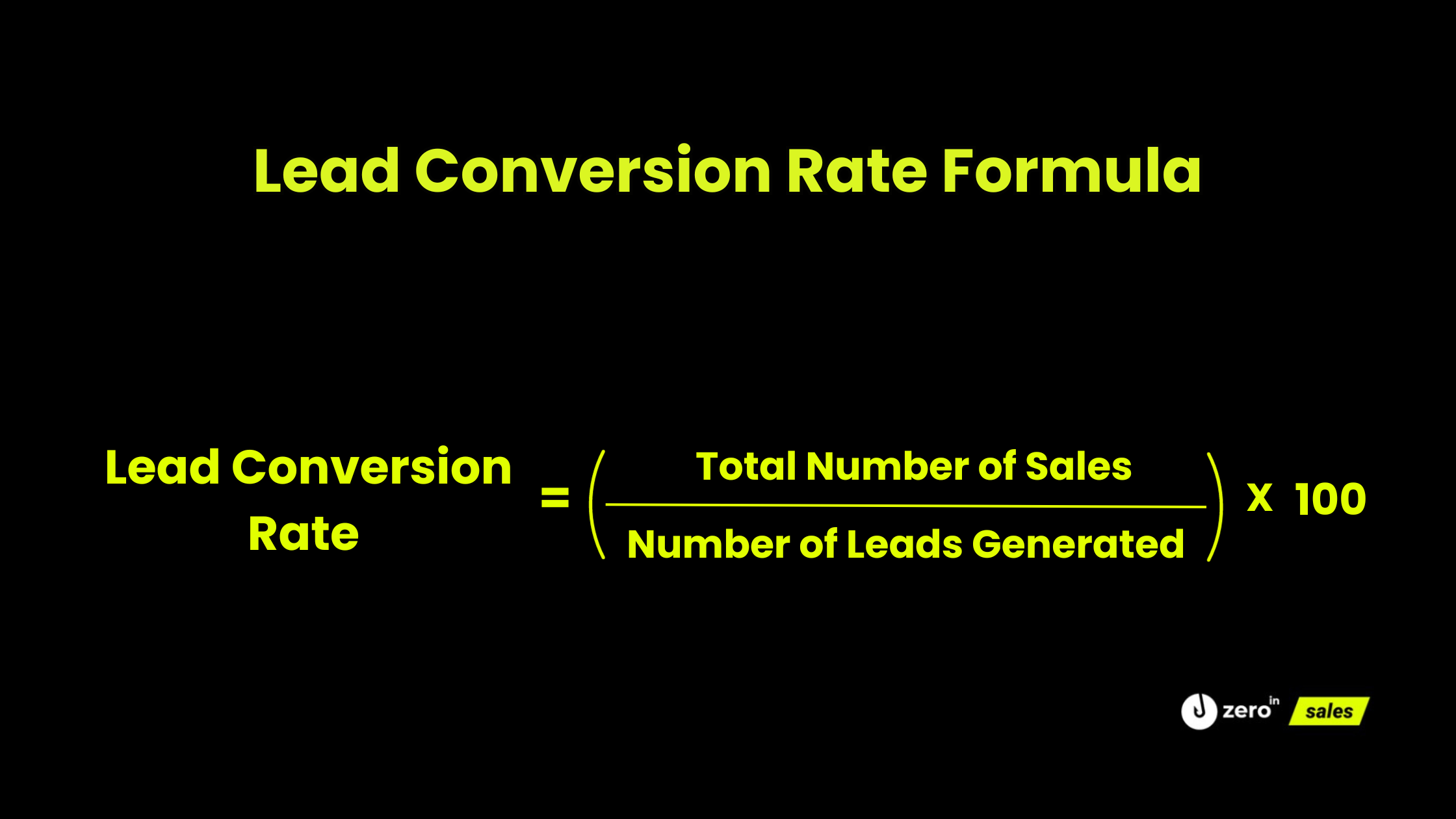
For instance, if you generate 1,000 leads and close 50 sales, your Lead Conversion Rate would be 5%.
A higher percentage indicates that your marketing and sales teams are effectively turning potential leads into actual sales.
Conversely, a lower rate might suggest the need for strategy optimization.
2. Cost Per Conversion: Calculating Investment Worth
This metric reveals the monetary investment required to convert a potential lead. It’s an essential gauge to understand if the marketing investments are paying off.
Cost Per Conversion = Total Cost of Campaign / Number of Conversions
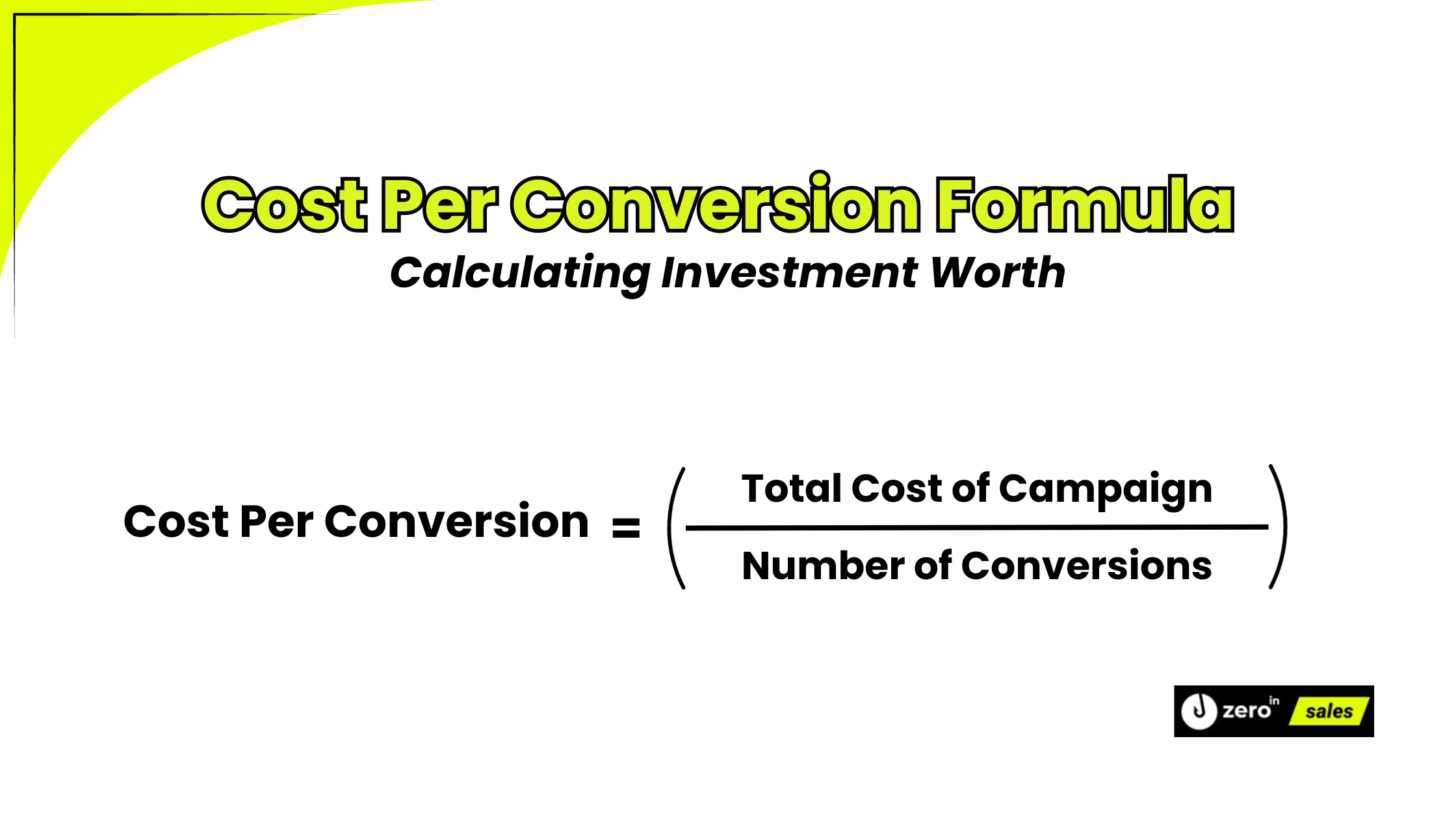
For example, if you spend $5,000 on a campaign and achieve 100 conversions, your Cost Per Conversion is $50.
A high value might indicate that you’re over-investing for each conversion, signaling room for budget optimization.
3. Lead Value: Gauging Potential Revenue
Lead Value quantifies the potential revenue from each lead. It’s a determinant of how much a lead might contribute to your revenue stream.
Lead Value = Total Revenue from Leads / Total Number of Leads
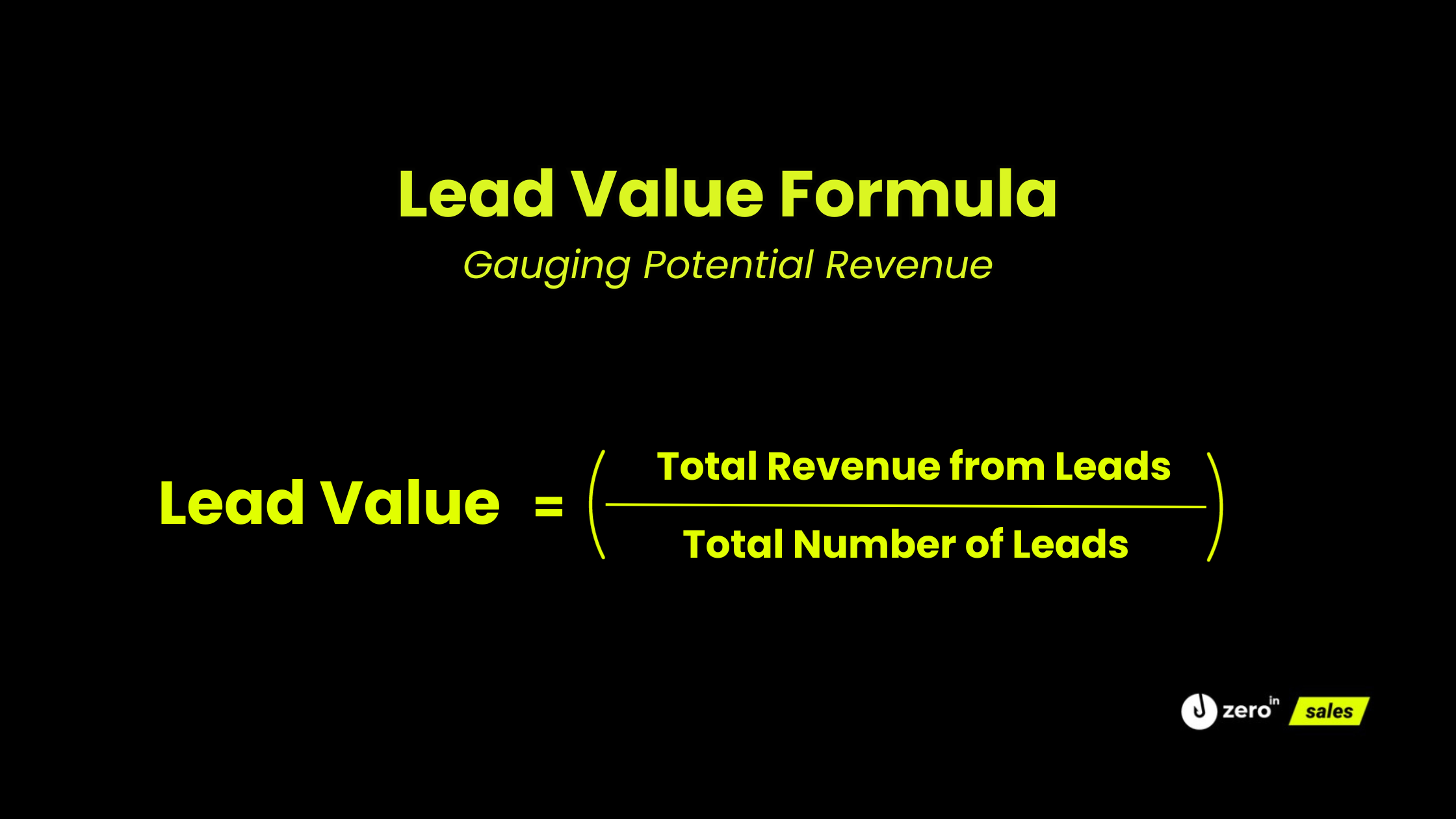
If you earn $10,000 from 200 leads, your Lead Value is $50.
Understanding this helps businesses focus their resources on the most lucrative leads.
4. Conversion ROI: Evaluating Campaign Profitability
This metric evaluates the profitability of your lead generation campaigns. By assessing the return on investment for each campaign, you can prioritize the most effective strategies.
Conversion ROI = (Net Profit from Campaign / Cost of Campaign) x 100%
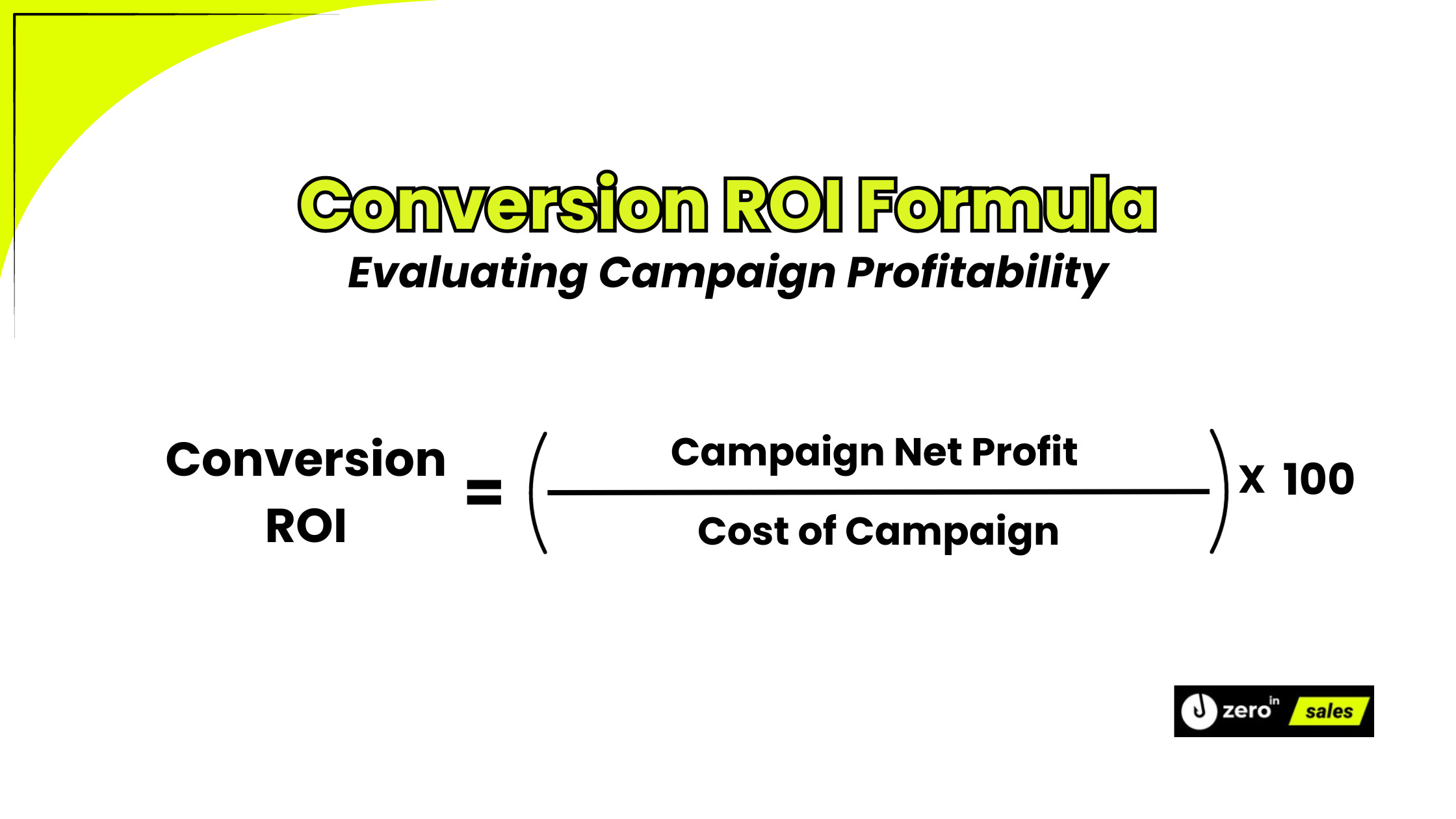
For instance, if a campaign costing $5,000 brings in a profit of $15,000, the Conversion ROI is 200%.
This percentage aids in channeling funds into the most profitable marketing avenues.
5. Time to Conversion: Speed of the Sales Process
It’s the duration taken for a lead to journey from an initial touchpoint to a sale. Monitoring this metric can help streamline the sales process.
Time to Conversion = Date of Initial Contact – Date of Conversion
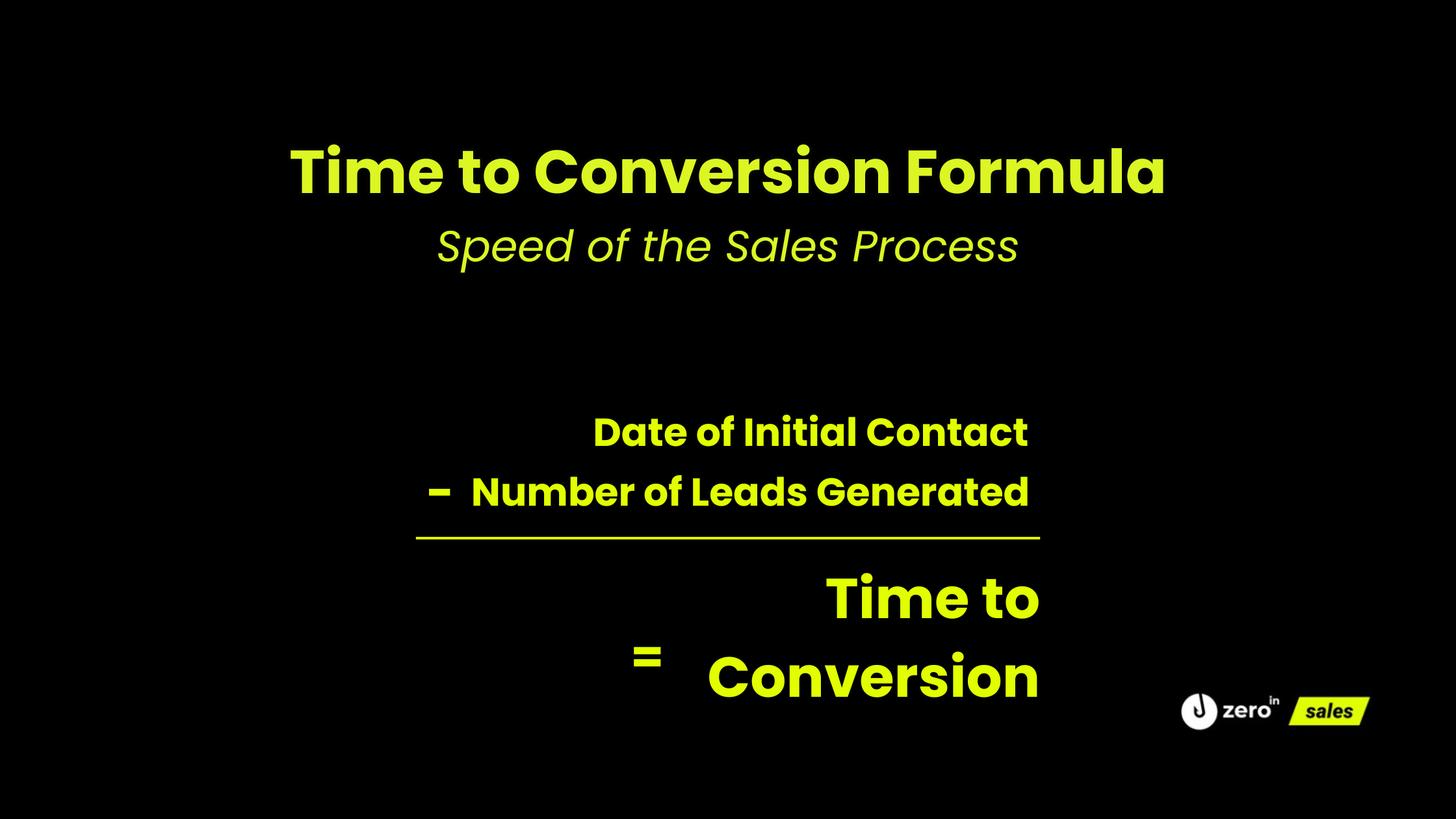
If a lead was acquired on January 1 and converts on January 15, the Time to Conversion is 15 days.
Shorter conversion times indicate an agile and efficient sales process, while extended durations might necessitate strategy modifications.
In the end, these metrics are not just numbers on a spreadsheet. They’re the narrative of your marketing and sales efforts, telling you what’s working and where there’s room for improvement.
They’re your guideposts, ensuring that your strategies are not just about generating leads, but about generating success.
What is Sales Closing Rate and How to Calculate it?
Sales Closing Rate, also often referred to as the Close Rate or Win Rate, is a crucial metric for businesses to understand
It provides clarity about the effectiveness of your sales team and strategies.
More than just a percentage, it reflects the potency of your sales pitches, the relevance of your offerings, and the responsiveness of your target audience.
Understanding the sales closing rate enables businesses to refine their sales approach, foster better customer relations, and adjust resource allocation for optimal outcomes.
If the rate is high, your sales techniques are on-point. However, a low rate might indicate potential issues in the sales funnel that need attention.
Definition:
Sales Closing Rate is the ratio of leads that have been successfully converted into actual sales compared to the total number of leads that have entered the sales pipeline.
How to Calculate Sales Closing Rate:
To calculate the Sales Closing Rate, you divide the number of sales that have been closed by the total number of sales opportunities, and then multiply by 100 to get a percentage. Here’s the formula:
Sales Closing Rate = (Number of Sales Closed / Total Number of Leads or Opportunities) x 100%
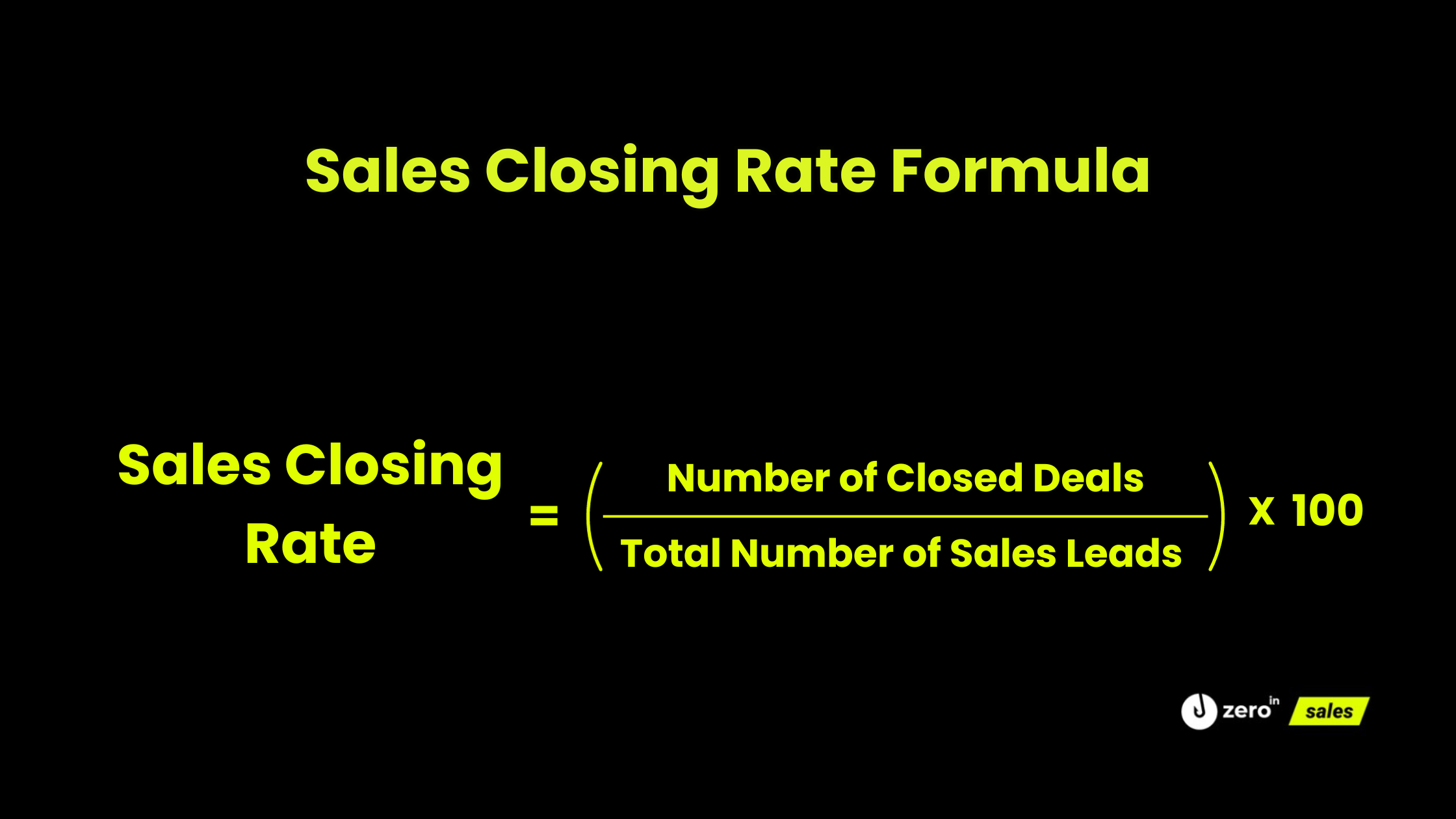
Example:
Let’s say your team approached 200 leads in a month and successfully closed deals with 40 of them. Your Sales Closing Rate would be calculated as follows:
Sales Closing Rate = (40 / 200) x 100% = 20%
This means 20% of the leads or opportunities resulted in sales.
Factors Affecting Sales Closing Rate:
- Quality of Leads: The better the quality of leads, the higher the likelihood of closing the sale. Qualified leads have a genuine interest or need that aligns with your offering.
- Sales Team’s Skills: A proficient sales team adept at understanding client needs, handling objections, and offering tailored solutions can significantly enhance the closing rate.
- Product/Service Relevance: If your product or service matches the current demands of the market and addresses genuine pain points, it can elevate the sales closing rate.
- External Factors: Economic conditions, competition, and other macro-environmental factors can influence the rate.
Improving Your Sales Closing Rate
It’s not enough just to understand or calculate this rate, acting on it is equally important.
If your Sales Closing Rate is below the industry average or has been declining over time, consider:
- Training and Development: Equip your sales team with better tools, training, and resources.
- Customer Insights: Understand your customers’ pain points and needs more deeply. Tailor your sales pitch to address these areas.
- Product or Service Evaluation: Perhaps there are aspects of your offerings that aren’t meeting market expectations. Regular feedback can help in this direction.
- Sales Process Audit: Review your sales process end-to-end. There might be bottlenecks or inefficiencies hampering conversion.
All in all, the Sales Closing Rate isn’t just a measure of how well your sales team is performing.
It’s a window into broader business health, showcasing how well your offerings meet market demands and the effectiveness of your sales strategies.
Periodic reviews and adjustments based on this metric can pave the way for sustained business growth.
How many touchpoints does your lead need to convert?
We’re all eager to get that ‘Yes’ from a potential customer.
However, the path to conversion is rarely as straightforward as presenting an offer and immediately sealing the deal.
With today’s information overload and competing businesses vying for a consumer’s attention, how many touchpoints does it genuinely take for a lead to convert?
Defining a Touchpoint
First, let’s define a touchpoint.
It’s any interaction between your business and the potential customer.
This can range from an email, a phone call, to a social media engagement.
Each interaction carries the potential to nudge the lead closer to conversion.
The Touchpoint Statistic: Fact or Fiction?
You might have come across the figure that suggests it takes an average of 8 touchpoints to make a sale in B2B.
However, while this figure is rooted in research, it’s essential to note that it’s a broad average.
Banking on this number without considering your unique business context is akin to wearing one-size-fits-all shoes; it might fit, but it’s likely not optimal.
How Many Touchpoints Do Different Leads Require Before a Sale?
The answer, as expected, is multi-faceted:
- Inactive Customers: Typically, these customers have interacted with your brand in the past but are currently dormant. Reigniting their interest might only necessitate 1-3 touchpoints.
- Warm Inbound Lead: This is a prospect who has shown some interest in your offering—perhaps by subscribing to a newsletter or downloading an e-book. Converting them often requires a more personalized approach with 5-12 touchpoints.
- Cold Prospect: The most challenging group. These individuals might not have any prior knowledge or interest in your brand. Penetrating their awareness and persuading them might demand anywhere from 20-50 touchpoints.
Is Counting Touchpoints the Right Approach?
Instead of being fixated on a specific number, consider these principles:
- Understand Your Customer’s Journey
Map out the typical journey your customers take, from awareness to conversion.
Identify common touchpoints and ensure you’re present and active at each of those stages.
- Diversify Your Touchpoints
Don’t put all your eggs in one basket.
Utilize a mix of emails, ads, social media interactions, webinars, or face-to-face meetings to engage leads.
It ensures you’re reaching potential customers through their preferred channels.
- Quality Over Quantity
It’s not about bombarding your potential customers with countless messages but providing valuable and relevant interactions.
A well-timed, insightful touch can be more impactful than ten generic ones.
Touchpoints: Not Just a Numbers Game
It’s tempting to seek a one-size-fits-all answer.
But the reality is, every industry, product, and customer is unique.
A boutique fashion brand might need fewer touchpoints than an enterprise software solution.
Rather than chasing an elusive ‘perfect’ number, focus on understanding your audience’s needs, pain points, and decision-making processes.
Develop a strategy that aligns with their journey, ensuring each touchpoint delivers value and nudges them closer to conversion.
In sales and marketing, it’s not about how many times you reach out, but how meaningfully you connect. Ultimately, that’s what touchpoints are all about.
How can ZeroIn help you reach your Sales Targets?
In the quest to meet and exceed sales targets, having the right tools at your disposal can turn aspirations into actualities.
Here’s how ZeroIn can empower you to not just meet, but exceed your B2B sales targets:
Precision-Driven Data Collection
ZeroIn does the legwork to ensure you don’t just have data, but you have the right data.
By extracting comprehensive and up-to-date information from LinkedIn, ZeroIn ensures you’re acting on information that’s both current and highly relevant to your business needs.
This precision in data collection is the first step in crafting campaigns that convert.
Real-Time Email Verification
Imagine the efficiency your team can achieve with a tool that provides business emails verified in real-time.
ZeroIn does just that, significantly reducing bounce rates and ensuring that your cold email campaigns actually land in your prospects’ inboxes, paving the way for improved engagement and higher conversion rates.
GDPR Compliance for Peace of Mind
In a world where data privacy cannot be taken lightly, ZeroIn’s GDPR compliance isn’t just a feature – it’s a promise of integrity and trust.
With ZeroIn, you can confidently reach out to prospects knowing that your data collection is ethical and legally compliant, protecting both you and your potential customers.
Data Accuracy That Builds Confidence
ZeroIn boasts an accuracy rate of 98%, a figure that reflects reliability.
This means you can base your sales strategies on data you trust, which minimizes risks and empowers your team to engage with prospects using information that’s accurate and actionable.
A Wealth of Data at Your Fingertips
With access to 26 different data points on leads and companies, ZeroIn allows you to tailor your outreach with a level of personalization that’s unmatched.
It’s not just about having names and titles; it’s about understanding roles, responsibilities, and company dynamics, enabling a tailored approach that resonates with each unique lead.
Expand Your Reach with a Massive Database
With a database that includes over 200 million contacts, ZeroIn ensures you have a broad field to pinpoint potential leads.
This extensive reach is instrumental in identifying the most promising prospects, facilitating a more efficient scaling of your outreach efforts.
ZeroIn isn’t just a tool, it’s a game-changer for B2B sales professionals.
By integrating this powerful platform into your sales strategy, you align with a data-driven approach that can significantly boost your sales closing rate.
Whether you’re reactivating dormant leads, nurturing warm prospects, or breaking the ice with cold contacts, ZeroIn equips you with the insights and tools to do so effectively.
With ZeroIn, you don’t just chase sales targets – you set new benchmarks for success.
Conclusion
So, what’s the magic number?
How many leads do you really need?
If you’ve been with us from the start of the blog, you’ll know by now that it’s not quite that simple.
But here’s the crux: the quantity of leads you need is directly tied to your specific business goals, resources, and the quality of those leads.
We’ve walked through the landscape of leads, from recognizing what qualifies as a strong prospect to understanding the nuanced differences between MQLs, SQLs, and PQLs.
We’ve calculated costs per lead, and we’ve underscored the significance of key conversion metrics and the sales closing rate.
All these factors work together like cogs in a machine, driving you toward that end goal: growth.
Remember, the number of leads you pursue should be as informed and strategic as the approach you take to close them.
It’s a balance of quantity and quality, driven by data and a solid understanding of your market.
And don’t forget, tools like ZeroIn are there to help streamline your process, offering precision in your data collection and ensuring that each outreach has the potential to strengthen your sales pipeline.
The takeaway?
Arm yourself with knowledge, back it up with the right tools, and go after those leads with determination.
The exact number for 2023 will vary, but your resolve to grow should not.
Here’s to your success, one well-earned lead at a time.
FAQs
What is Considered a Qualified Lead?
Simply put, a qualified lead is someone who fits the mold of your perfect customer.
They’re not just any random person who stumbled upon your website or business.
Instead, they’ve caught the eye of your marketing team, been given the nod of approval by your sales crew, and most importantly, they’ve shown clear intention to buy what you’re selling.
How to Properly Calculate Cost per Lead (CPL)?
To calculate your CPL, you simply divide the total cost of your marketing campaign by the number of leads generated from that campaign.
CPL = Total Campaign Cost ÷ Number of Leads Generated
How many Leads do you Need to Grow your Business?
To determine how many leads you need to grow your business, you must first have clear revenue goals and understand your conversion funnel metrics.
Start by calculating the average deal value based on your revenue targets and past performance.
Then, work backwards from your sales goals, breaking down each stage of your conversion funnel – website visitors, prospects, MQLs, SQLs, opportunities, and customers – to figure out the number of leads you need at each stage.
Adjust these figures based on your conversion rates at each stage of the funnel to get a monthly and annual lead requirement that’s aligned with your growth ambitions.
Remember, these numbers are not set in stone; they are starting points that should be continually evaluated and adjusted according to market conditions and the effectiveness of your marketing and sales strategies.
What are important Lead Conversion Metrics?
Here are 6 key lead conversion metrics in 2023:
1. Lead Conversion Rate: Percentage of leads that turn into sales.
2. Lead-to-Sale Conversion Rate: Proportion of total leads that become customers.
3. Cost Per Conversion: Financial investment required for each lead conversion.
4. Lead Value: Potential revenue each lead represents.
5. Conversion ROI: Return on investment for each conversion campaign.
6. Time to Conversion: Time taken for a lead to convert into a sale.
What is Sales Closing Rate?
The Sales Closing Rate is the percentage of leads or opportunities that result in a sale. It’s a measure of your sales team’s efficiency and the effectiveness of your sales process.
To calculate it, use the following formula:
Sales Closing Rate = (Number of Sales Closed / Total Number of Leads or Opportunities) x 100%
What are the differences between MQL, SQL and PQL?
The key difference lies in their readiness to purchase, with MQLs being in the early stages of interest, SQLs closer to making a decision, and PQLs having experienced the product and considering a full purchase.
How many Touch points does your lead need to convert?
The number of touchpoints needed for a lead to convert can vary greatly.
Here’s a general guideline:
Inactive Customers: May only need 1-3 touchpoints to reignite their interest due to previous interactions with your brand.
Warm Inbound Leads: Those who’ve shown some interest could require a more tailored approach, potentially needing 5-12 touchpoints.
Cold Prospects: Individuals with no prior knowledge or interest in your brand could need a substantial number, like 20-50 touchpoints, to move through the awareness and consideration stages.
However, it’s not just about the quantity of these interactions.
Quality and relevance of each touchpoint are crucial.
How can ZeroIn help you reach your Sales Targets?
ZeroIn can be a pivotal asset for sales teams aiming to meet and surpass their sales goals.
Here’s how it can contribute to your B2B sales success:
Precision-Driven Data Collection
ZeroIn’s advanced data collection from platforms like LinkedIn helps in gathering targeted and updated information, crucial for developing effective sales strategies.
Real-Time Email Verification
By providing business emails that are verified in real-time, ZeroIn decreases bounce rates and increases the chances that your emails actually reach your prospects, setting the stage for better engagement.
GDPR Compliance
ZeroIn adheres to strict GDPR guidelines, ensuring that you can approach prospects without compromising data privacy and integrity.
Data Accuracy
With a 98% accuracy rate, ZeroIn provides a level of reliability that allows your sales team to approach leads with confidence, backed by trustworthy data.
Detailed Lead Insights
Offering 26 different data points on leads and companies, ZeroIn enables highly personalized outreach, increasing the relevance and effectiveness of your sales efforts.
Expansive Database
Access to an extensive database of over 200 million contacts means that you have a vast pool from which to identify and connect with potential leads.
By integrating ZeroIn into your sales processes, you position your team to leverage a data-driven approach that can significantly enhance your ability to close sales and reach new heights in performance.
Whether it’s about re-engaging inactive customers or initiating contact with new B2B prospects, ZeroIn provides the necessary tools and insights to achieve your targets more effectively.
